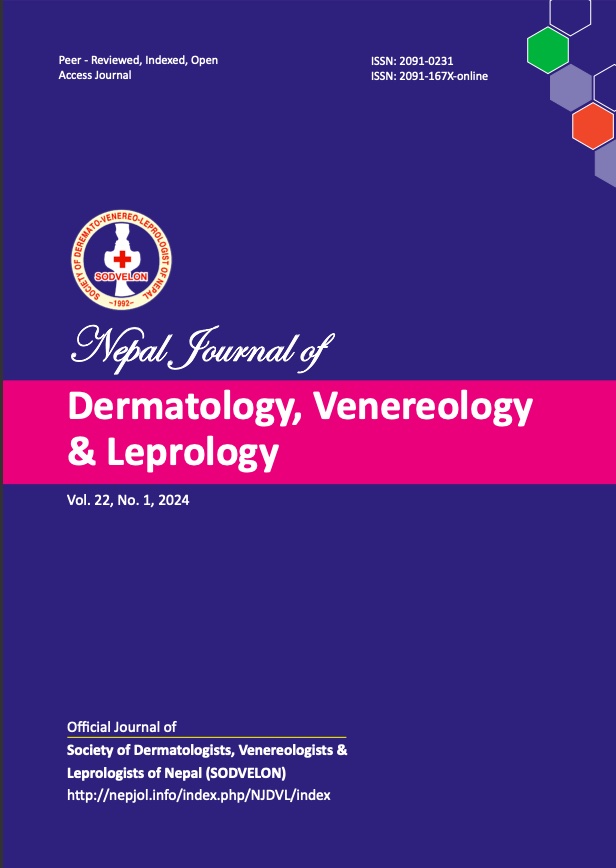Comparison of Safety Of Oral Ivermectin with Topical Permethrin in the Treatment of Scabies: A Comparative Study
DOI:
https://doi.org/10.3126/njdvl.v22i1.62576Keywords:
Ivermectin, Permethrin, ScabiesAbstract
Introduction: The mite Sarcoptes scabiei var. hominis is the cause of scabies, a skin illness. The Food and Drug Administration (FDA) approves permethrin cream (5%) for the treatment of scabies and is also recommended by the Centers for Disease Control and Prevention (CDC) as first-line topical therapy for scabies. Oral ivermectin, a novel antiparasitic agent that has been extensively used for several parasitic infections and can be used as an alternative approach for the treatment of scabies. This comparative study aimed to describe the adverse effects of ivermectin and permethrin and their comparison.
Objective: To compare the safety outcomes of ivermectin and permethrin for the use of scabies.
Methods: This is the prospective open-labeled randomized and comparative study carried out in the outpatient department of dermatology and venereology at Tribhuvan University Teaching Hospital, Kathmandu. In Group A, patients received oral Ivermectin tablets at a dose of 200 μg/kg on day 1 before breakfast, and in Group B, patients received topical Permethrin 5% cream to be applied all over the body below the neck at night twice a week apart.
Results: This study included 93 patients who met the inclusion criteria, with 45 patients belonging to the Ivermectin group and 48 patients belonging to the Permethrin group. In the ivermectin group, the most common side effect reported was nausea, followed by abdominal discomfort and headache. In the Permethrin group, the most common side effect was a burning sensation on the skin after application of the drug, followed by irritation and erythema, which were present in 3.2% and 2.2% of patients, respectively. The difference in overall side effects between the two groups was statistically not significant. (p=0.682)
Conclusion: Our study concludes that a single dose of oral Ivermectin given at a dose of 200 micrograms/kg is comparable to Permethrin cream 5% used twice a week in terms of safety standards. Neither drug caused any life-threatening adverse reactions in the patients.
Downloads
Downloads
Published
How to Cite
Issue
Section
License
Copyright (c) 2024 Society of Dermatologists, Venereologists and Leprologists of Nepal

This work is licensed under a Creative Commons Attribution 4.0 International License.
Copyright on any research article is transferred in full to Nepal Journal of Dermatology, Venereology & Leprology upon publication. The copyright transfer includes the right to reproduce and distribute the article in any form of reproduction (printing, electronic media or any other form).




